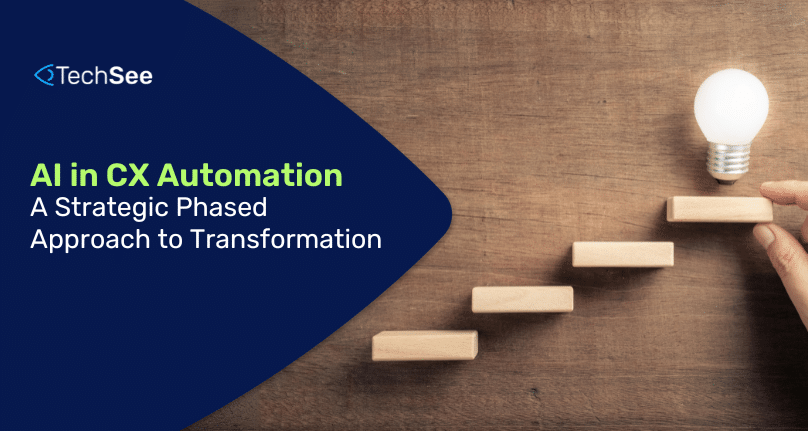Contents
Not all Agentic AI solutions are created equal. Finding the optimal Agentic AI for your organization is not a simple task. It seems like every provider claims to feature very similar technologies, often at wildly different price points. In this post, we will explore the key differentiating factors between basic and more advanced Agentic AI solutions and how to evaluate which provider will best meet your needs.
There is a crucial distinction between basic Agentic AI, which can autonomously complete simple tasks, and advanced Agentic AI, which can automate complex scenarios like setup, onboarding, and troubleshooting. Whereas basic agentic AI solutions may seem like a quick and easy win, these solutions struggle to deliver scalable automation and sustainable ROI impact. Understanding the
Basic Agentic AI: Task Automation
Basic Agentic AI is effective for straightforward, repetitive tasks. It can automate processes like data entry, answering FAQs, scheduling appointments, or resetting passwords. These systems act autonomously but are often limited to handling scenarios with a clear, linear workflow. For example, if a customer asks a basic Agentic AI to reset their account password, the AI can follow a predefined sequence of steps to complete the task with little variation.
This type of AI improves efficiency for routine tasks but needs more cognitive depth to handle situations that require nuanced decision-making or adaptation based on unexpected inputs.
In a recent conversation with the CXO at a Fortune 100 brand, he shared the following insights into his Agentic AI journey.
Year One: Their first Agentic AI deployment focussed on the low-hanging fruit use cases with high scale. They started with account balance inquiries and system outage updates. This investment delivered a 24% improvement in their self-service containment rate over their legacy chatbot. The board was impressed, but wanted to see the AI tackle their most costly use cases – such as setup, how-to and troubleshooting inquiries.
They invested a great deal of time and effort integrating, testing, learning and optimizing the Agentic AI provider, and while they had a quick win, they didn’t yet have their ROI home run.
Year Two: He doubled down on his investment in this Agentic AI provider. Their tested the technology in their more challenging, high volume and costly use cases like technical setup, how-to and troubleshooting. This was where they expected to see the BIG ROI. The AI provider’s technology wasn’t well suited to these use cases.
Ultimately, they found additional opportunities by expanding their Agentic chatbot into an Agentic Voice Bot, and expanding their informational Agentic AI into additional simple use cases with lesser scale.
These efforts delivered a further 16% improvement in self-service containment. The board appreciated this gain but questioned whether the technology was beginning to show diminishing returns.
Year Three: This CXO is now struggling to justify continued investment and advancement with the current Agentic AI provider. Upgrading to a more advanced Agentic AI provider, one better suited to their more challenging and costly use cases will require (A) going back to the board for new funding and then either (A) adding an additional provider, or (B) reinvesting in setting up and integrating a new Agentic AI provider with more advanced capabilities.
The decision to start with a basic Agentic AI provider delivered substantial performance gains over their chatbots, but failed to deliver the scale and ROI the board expected from this revolutionary technology.
Advanced Agentic AI: Reasoning, Logic, and Complex Problem Solving
In contrast, advanced Agentic AI—like TechSee’s Sophie AI—goes far beyond basic automation. It leverages advanced reasoning, logic, and multimodal capabilities to tackle complex tasks that typically require human intelligence autonomously. For example, advanced Agentic AI can walk customers through setting up a new device, guide them on how to use it, diagnose and troubleshoot technical problems, and resolve complex billing inquiries.
In short, advanced Agentic AI like Sophie AI handles both the low hanging fruit typically relegated to LLMs and chatbots, and the advanced use cases that require more sophisticated solutions.
These systems use a combination of Semantic Memory, Episodic Memory, and Procedural Memory to recall past interactions, apply learned processes, and adjust their actions based on real-time inputs. For instance, when helping a customer troubleshoot a malfunctioning product, advanced Agentic AI can analyze images, identify the issue, cross-reference known solutions, and guide the user through a step-by-step resolution without human intervention.
The Key Differentiator: Cognitive Depth and Multimodality
The real difference lies in the cognitive depth and multimodal abilities of advanced Agentic AI. While basic Agentic AI is efficient for well-defined tasks, advanced Agentic AI can:
- Understand and process multiple types of inputs (text, voice, images, video) in real-time.
- Use reasoning and logic to solve intricate problems with multiple steps or dependencies.
- Adapt its approach based on contextual cues, past interactions, and new data.
- Make autonomous decisions that result in more complex, personalized solutions for users.
For enterprise leaders, finding the optimal agentic AI for you and your organization can be incredibly challenging. Deciding between basic and advanced Agentic AI comes down to the level of complexity of your operations and support needs. Suppose you need a solution that can think, adapt, and act in dynamic environments. In that case, whether it’s onboarding new clients, handling complex troubleshooting, or managing intricate workflows—advanced Agentic AI will provide the technology that can provide the most strategic value and long-term ROI.







